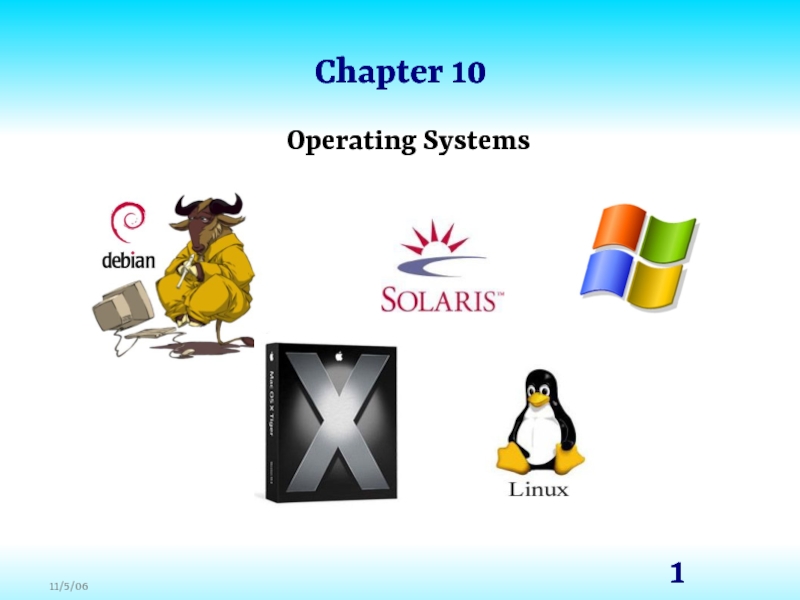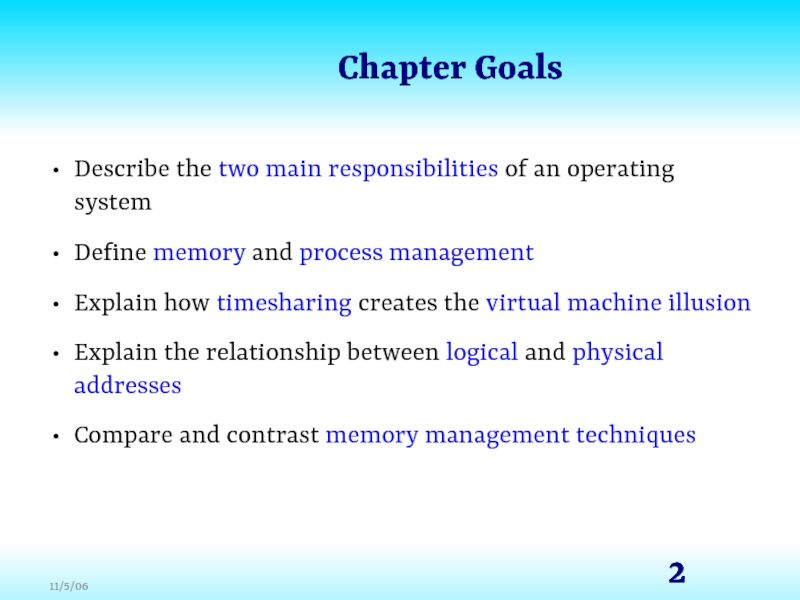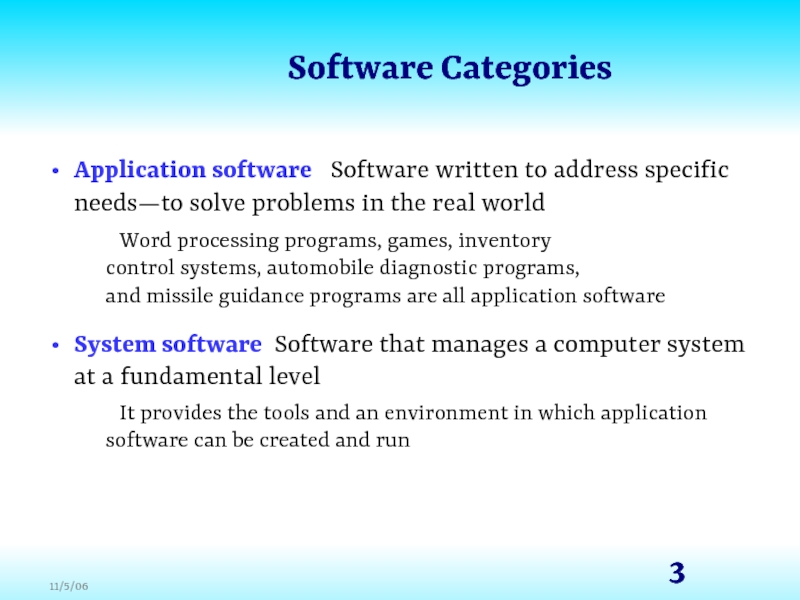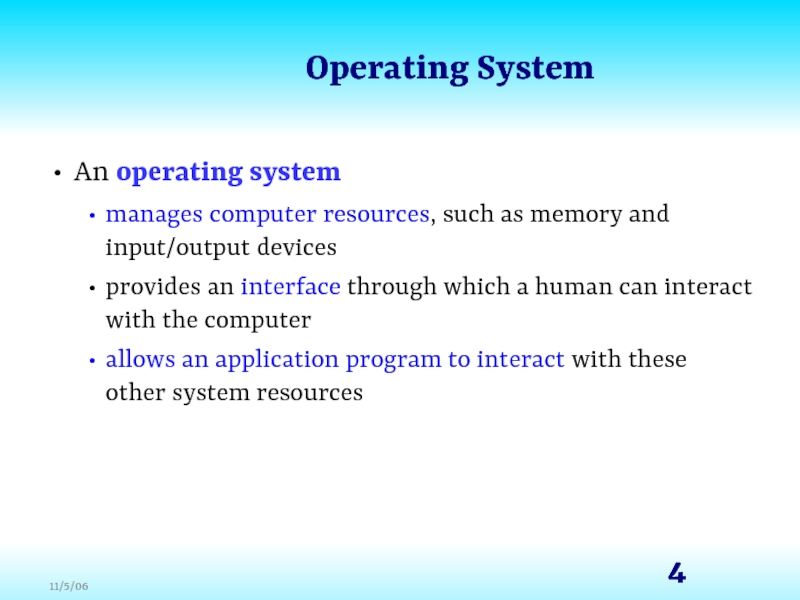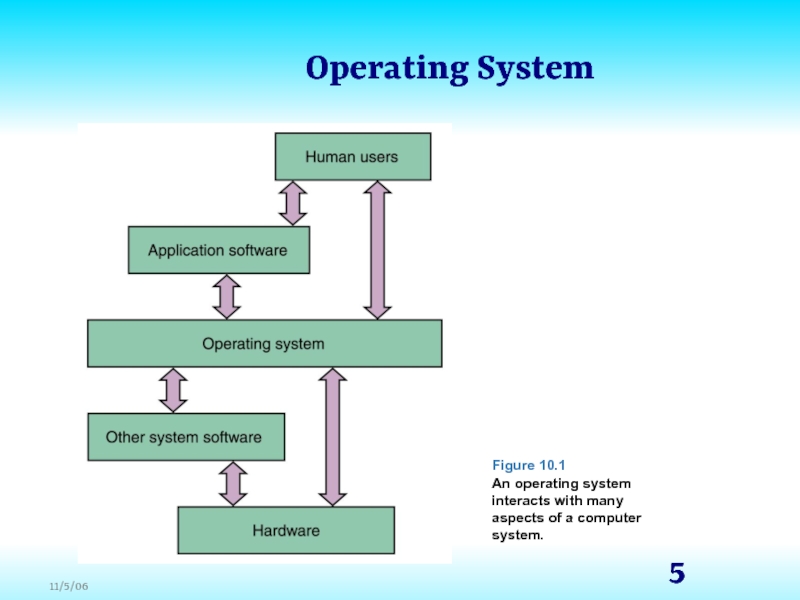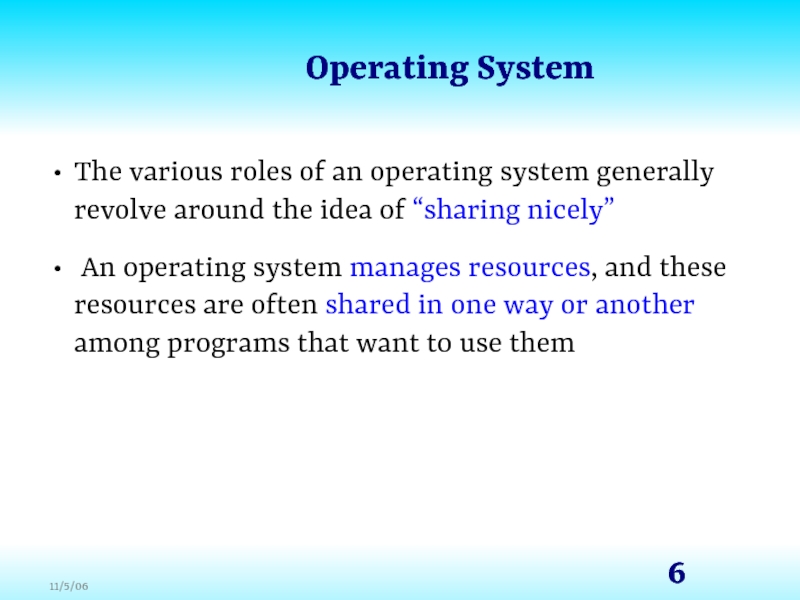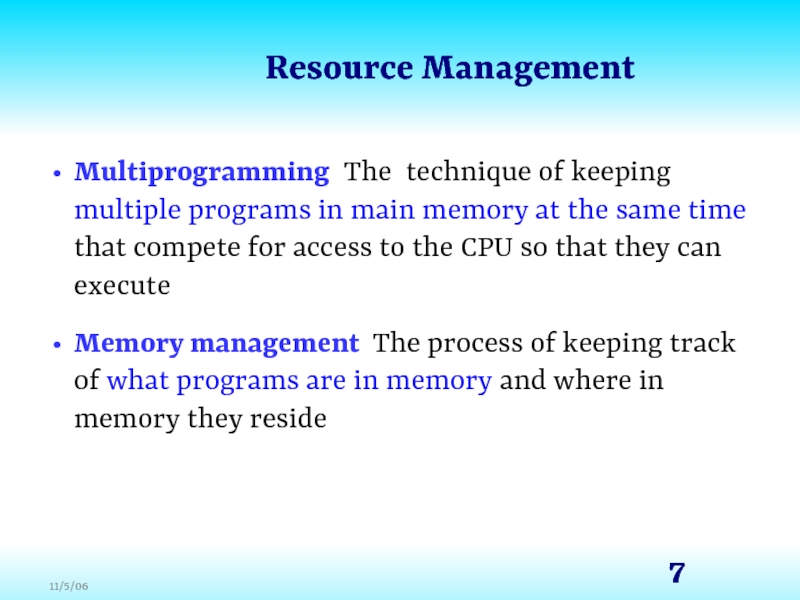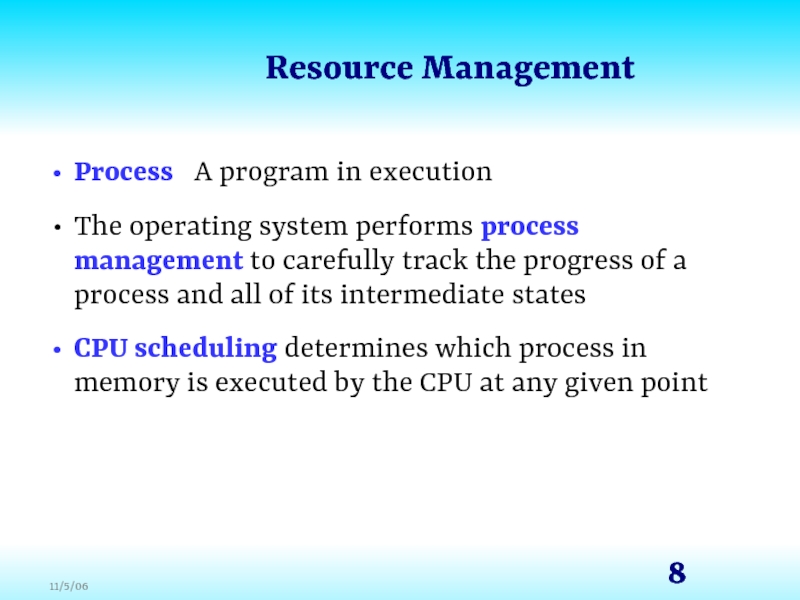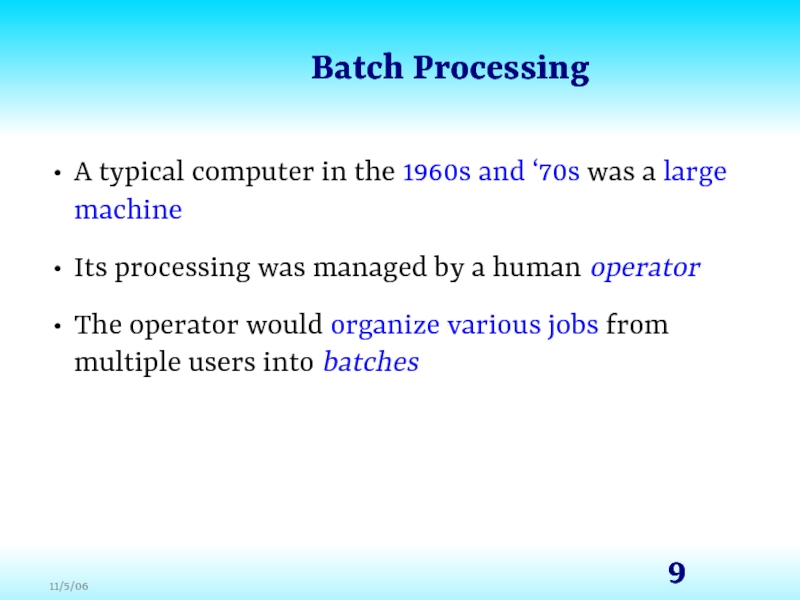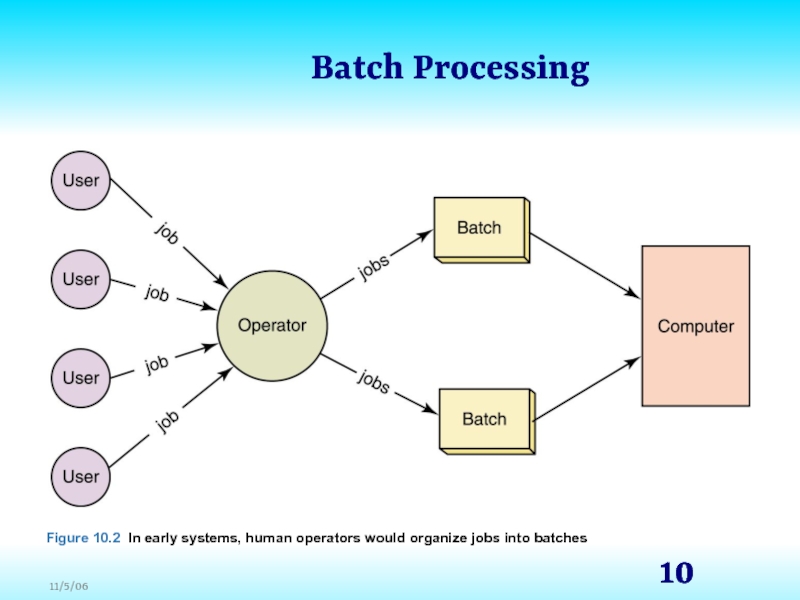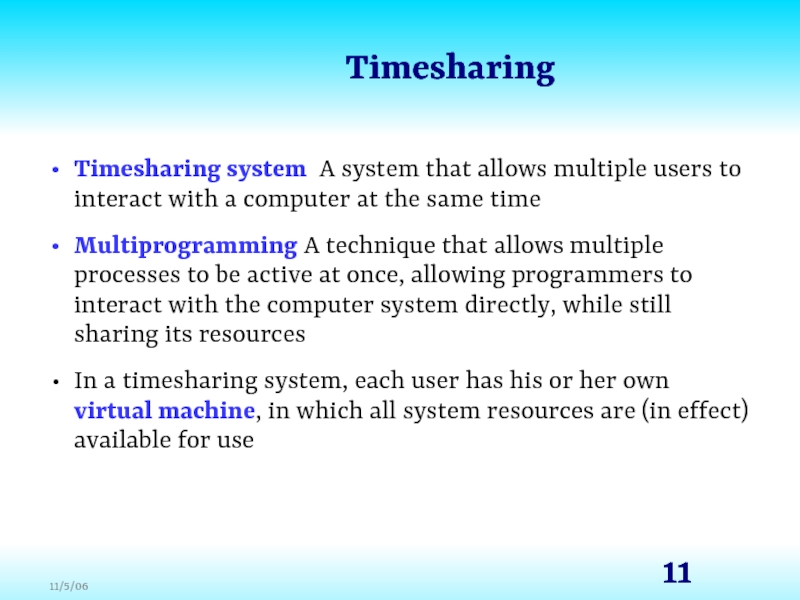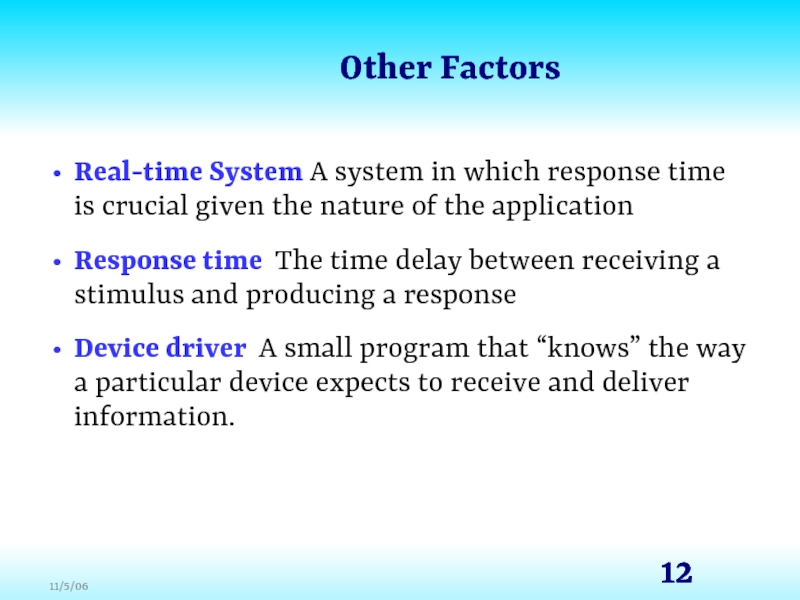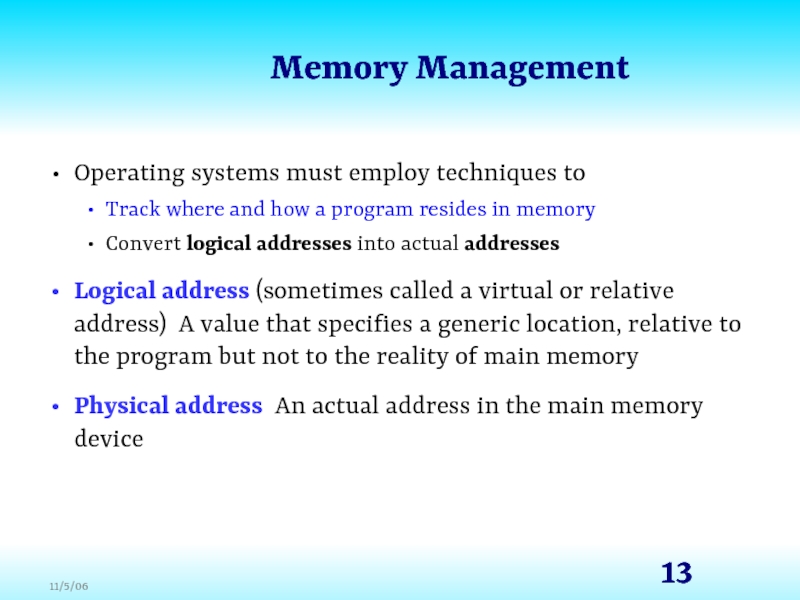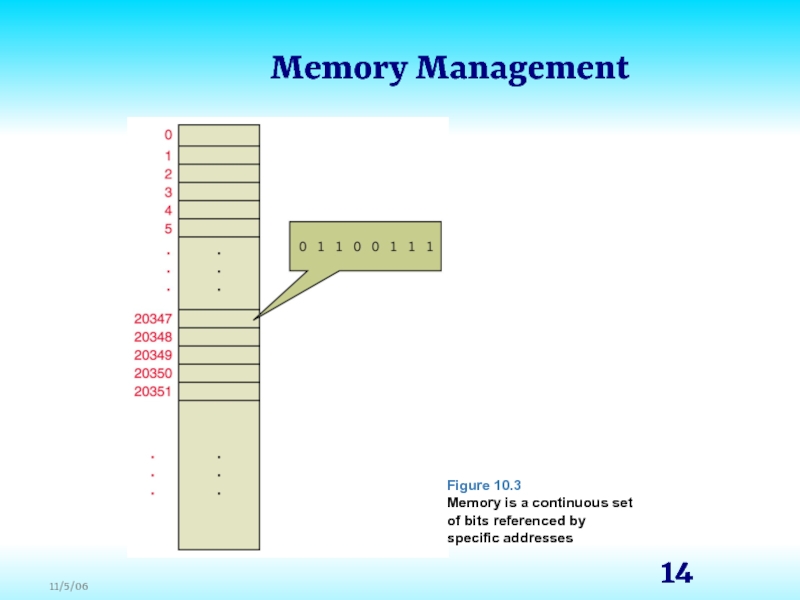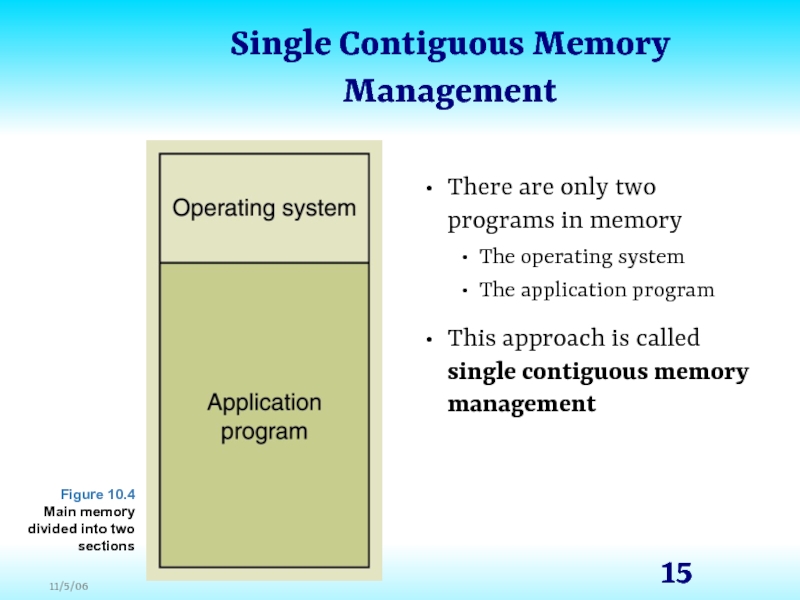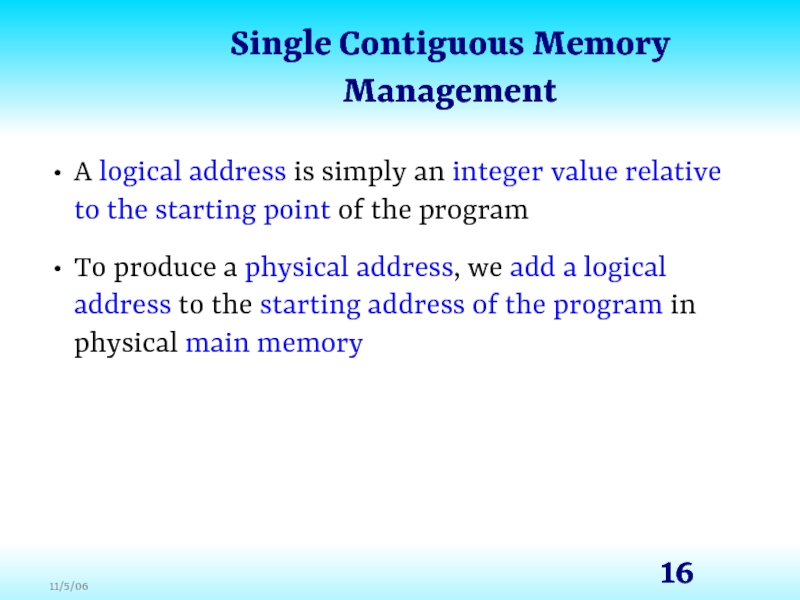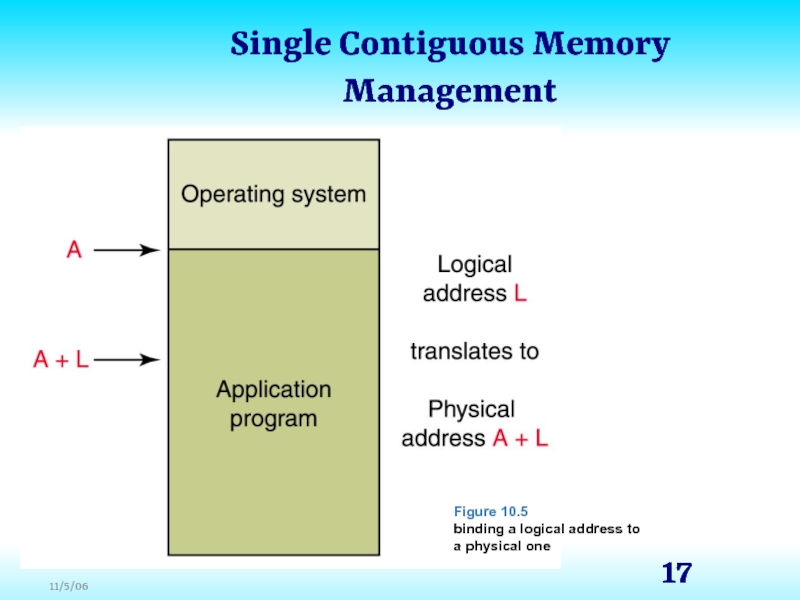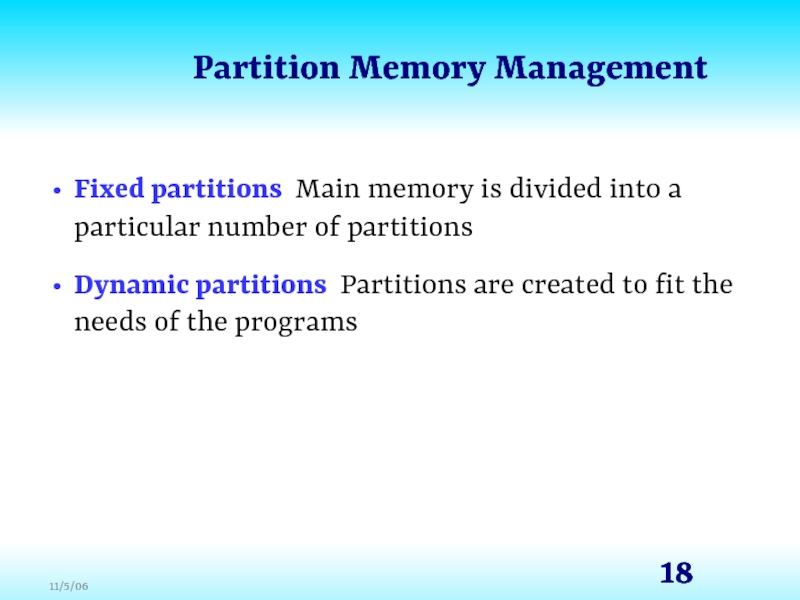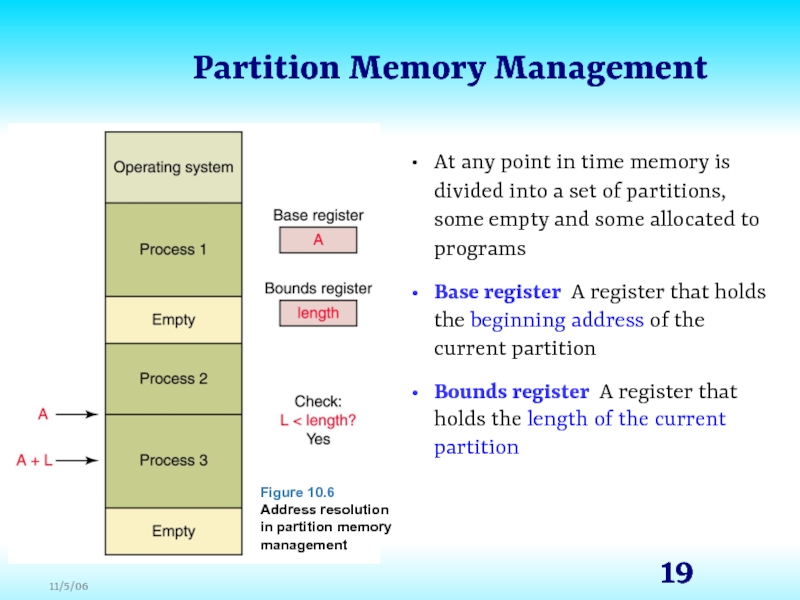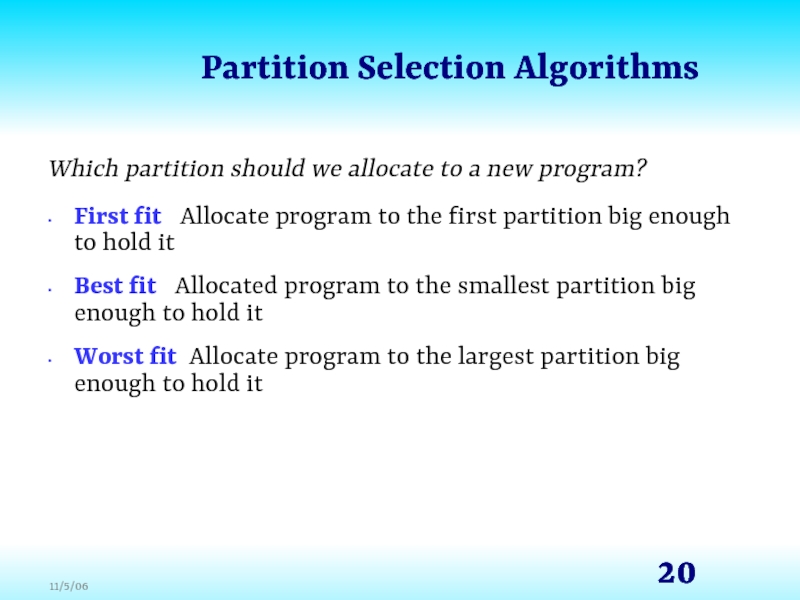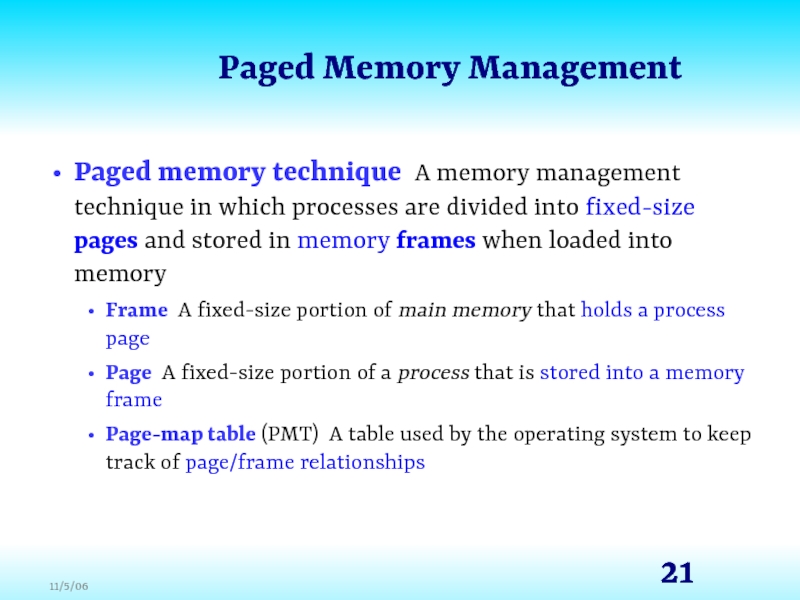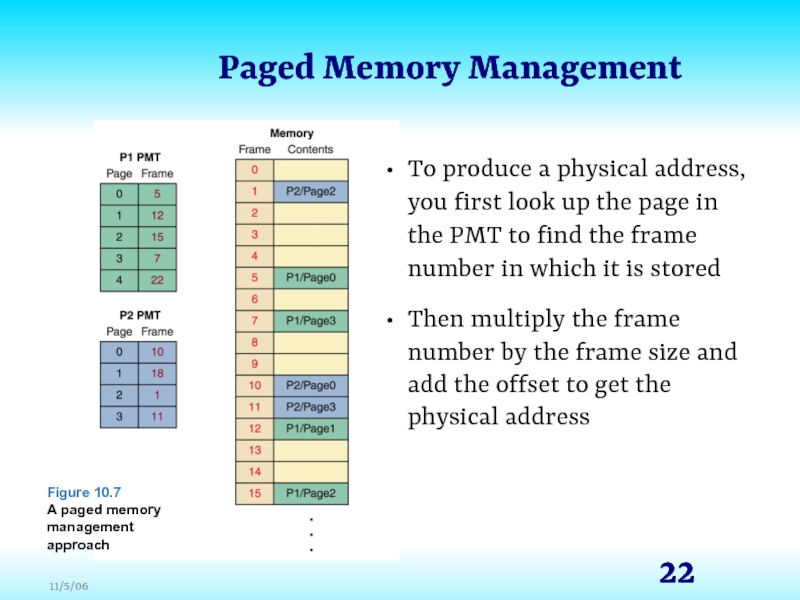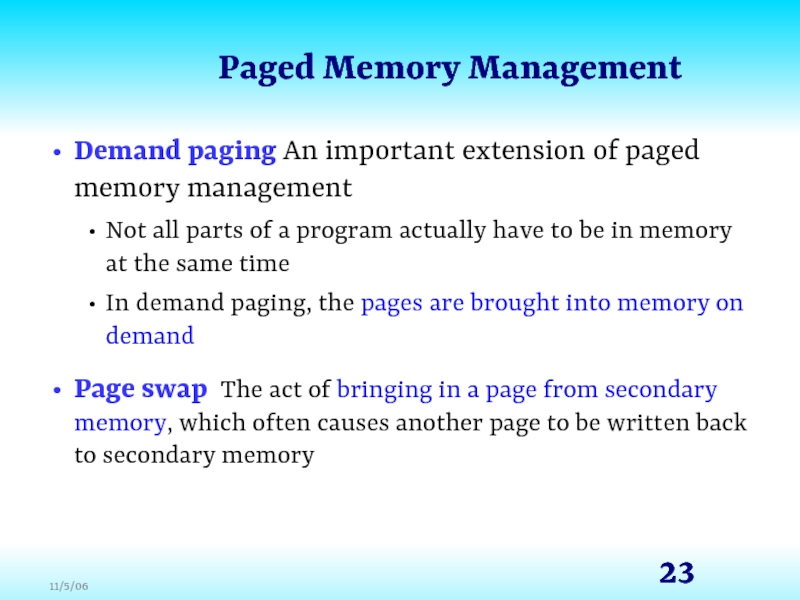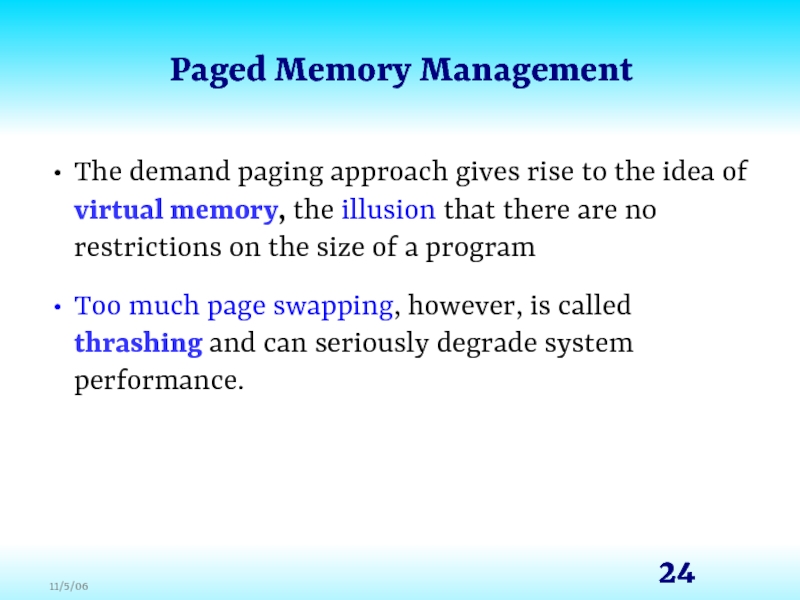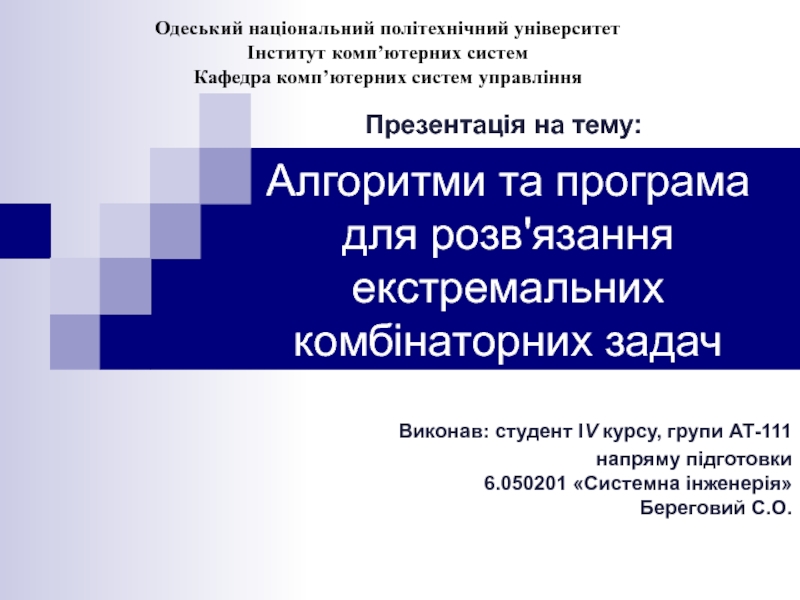- Главная
- Разное
- Дизайн
- Бизнес и предпринимательство
- Аналитика
- Образование
- Развлечения
- Красота и здоровье
- Финансы
- Государство
- Путешествия
- Спорт
- Недвижимость
- Армия
- Графика
- Культурология
- Еда и кулинария
- Лингвистика
- Английский язык
- Астрономия
- Алгебра
- Биология
- География
- Детские презентации
- Информатика
- История
- Литература
- Маркетинг
- Математика
- Медицина
- Менеджмент
- Музыка
- МХК
- Немецкий язык
- ОБЖ
- Обществознание
- Окружающий мир
- Педагогика
- Русский язык
- Технология
- Физика
- Философия
- Химия
- Шаблоны, картинки для презентаций
- Экология
- Экономика
- Юриспруденция
Operating systems. (Chapter 10) презентация
Содержание
- 1. Operating systems. (Chapter 10)
- 2. Chapter Goals Describe the two main responsibilities
- 3. Software Categories Application software Software written
- 4. Operating System An operating system manages
- 5. Operating System Figure 10.1 An operating
- 6. Operating System The various roles of an
- 7. Resource Management Multiprogramming The technique of keeping
- 8. Resource Management Process A program in
- 9. Batch Processing A typical computer in the
- 10. Batch Processing Figure 10.2 In early systems, human operators would organize jobs into batches
- 11. Timesharing Timesharing system A system that allows
- 12. Other Factors Real-time System A system in
- 13. Memory Management Operating systems must employ techniques
- 14. Memory Management Figure 10.3 Memory is
- 15. Single Contiguous Memory Management There are only
- 16. Single Contiguous Memory Management A logical address
- 17. Single Contiguous Memory Management Figure 10.5 binding a logical address to a physical one
- 18. Partition Memory Management Fixed partitions Main memory
- 19. Partition Memory Management At any point in
- 20. Partition Selection Algorithms Which partition should we
- 21. Paged Memory Management Paged memory technique A
- 22. Paged Memory Management To produce a physical
- 23. Paged Memory Management Demand paging An important
- 24. Paged Memory Management The demand paging approach
- 25. Have A Good Night Autumn Moon by Ansel Adams Nasa Encore
Слайд 2Chapter Goals
Describe the two main responsibilities of an operating system
Define memory
and process management
Explain how timesharing creates the virtual machine illusion
Explain the relationship between logical and physical addresses
Compare and contrast memory management techniques
Explain how timesharing creates the virtual machine illusion
Explain the relationship between logical and physical addresses
Compare and contrast memory management techniques
Слайд 3Software Categories
Application software Software written to address specific needs—to solve
problems in the real world
Word processing programs, games, inventory control systems, automobile diagnostic programs, and missile guidance programs are all application software
System software Software that manages a computer system at a fundamental level
It provides the tools and an environment in which application software can be created and run
Word processing programs, games, inventory control systems, automobile diagnostic programs, and missile guidance programs are all application software
System software Software that manages a computer system at a fundamental level
It provides the tools and an environment in which application software can be created and run
Слайд 4Operating System
An operating system
manages computer resources, such as memory and
input/output devices
provides an interface through which a human can interact with the computer
allows an application program to interact with these other system resources
provides an interface through which a human can interact with the computer
allows an application program to interact with these other system resources
Слайд 5Operating System
Figure 10.1
An operating system interacts with many
aspects of
a computer system.
Слайд 6Operating System
The various roles of an operating system generally revolve around
the idea of “sharing nicely”
An operating system manages resources, and these resources are often shared in one way or another among programs that want to use them
An operating system manages resources, and these resources are often shared in one way or another among programs that want to use them
Слайд 7Resource Management
Multiprogramming The technique of keeping multiple programs in main memory
at the same time that compete for access to the CPU so that they can execute
Memory management The process of keeping track of what programs are in memory and where in memory they reside
Memory management The process of keeping track of what programs are in memory and where in memory they reside
Слайд 8Resource Management
Process A program in execution
The operating system performs process
management to carefully track the progress of a process and all of its intermediate states
CPU scheduling determines which process in memory is executed by the CPU at any given point
CPU scheduling determines which process in memory is executed by the CPU at any given point
Слайд 9Batch Processing
A typical computer in the 1960s and ‘70s was a
large machine
Its processing was managed by a human operator
The operator would organize various jobs from multiple users into batches
Its processing was managed by a human operator
The operator would organize various jobs from multiple users into batches
Слайд 10Batch Processing
Figure 10.2 In early systems, human operators would organize jobs
into batches
Слайд 11Timesharing
Timesharing system A system that allows multiple users to interact with
a computer at the same time
Multiprogramming A technique that allows multiple processes to be active at once, allowing programmers to interact with the computer system directly, while still sharing its resources
In a timesharing system, each user has his or her own virtual machine, in which all system resources are (in effect) available for use
Multiprogramming A technique that allows multiple processes to be active at once, allowing programmers to interact with the computer system directly, while still sharing its resources
In a timesharing system, each user has his or her own virtual machine, in which all system resources are (in effect) available for use
Слайд 12Other Factors
Real-time System A system in which response time is crucial
given the nature of the application
Response time The time delay between receiving a stimulus and producing a response
Device driver A small program that “knows” the way a particular device expects to receive and deliver information.
Response time The time delay between receiving a stimulus and producing a response
Device driver A small program that “knows” the way a particular device expects to receive and deliver information.
Слайд 13Memory Management
Operating systems must employ techniques to
Track where and how a
program resides in memory
Convert logical addresses into actual addresses
Logical address (sometimes called a virtual or relative address) A value that specifies a generic location, relative to the program but not to the reality of main memory
Physical address An actual address in the main memory device
Convert logical addresses into actual addresses
Logical address (sometimes called a virtual or relative address) A value that specifies a generic location, relative to the program but not to the reality of main memory
Physical address An actual address in the main memory device
Слайд 14Memory Management
Figure 10.3
Memory is a continuous set of bits referenced
by specific addresses
Слайд 15Single Contiguous Memory Management
There are only two programs in memory
The operating
system
The application program
This approach is called single contiguous memory management
The application program
This approach is called single contiguous memory management
Figure 10.4
Main memory divided into two sections
Слайд 16Single Contiguous Memory Management
A logical address is simply an integer value
relative to the starting point of the program
To produce a physical address, we add a logical address to the starting address of the program in physical main memory
To produce a physical address, we add a logical address to the starting address of the program in physical main memory
Слайд 18Partition Memory Management
Fixed partitions Main memory is divided into a particular
number of partitions
Dynamic partitions Partitions are created to fit the needs of the programs
Dynamic partitions Partitions are created to fit the needs of the programs
Слайд 19Partition Memory Management
At any point in time memory is divided into
a set of partitions, some empty and some allocated to programs
Base register A register that holds the beginning address of the current partition
Bounds register A register that holds the length of the current partition
Base register A register that holds the beginning address of the current partition
Bounds register A register that holds the length of the current partition
Figure 10.6
Address resolution
in partition memory management
Слайд 20Partition Selection Algorithms
Which partition should we allocate to a new program?
First
fit Allocate program to the first partition big enough to hold it
Best fit Allocated program to the smallest partition big enough to hold it
Worst fit Allocate program to the largest partition big enough to hold it
Best fit Allocated program to the smallest partition big enough to hold it
Worst fit Allocate program to the largest partition big enough to hold it
Слайд 21Paged Memory Management
Paged memory technique A memory management technique in which
processes are divided into fixed-size pages and stored in memory frames when loaded into memory
Frame A fixed-size portion of main memory that holds a process page
Page A fixed-size portion of a process that is stored into a memory frame
Page-map table (PMT) A table used by the operating system to keep track of page/frame relationships
Frame A fixed-size portion of main memory that holds a process page
Page A fixed-size portion of a process that is stored into a memory frame
Page-map table (PMT) A table used by the operating system to keep track of page/frame relationships
Слайд 22Paged Memory Management
To produce a physical address, you first look up
the page in the PMT to find the frame number in which it is stored
Then multiply the frame number by the frame size and add the offset to get the physical address
Then multiply the frame number by the frame size and add the offset to get the physical address
Figure 10.7
A paged memory management approach
Слайд 23Paged Memory Management
Demand paging An important extension of paged memory management
Not
all parts of a program actually have to be in memory at the same time
In demand paging, the pages are brought into memory on demand
Page swap The act of bringing in a page from secondary memory, which often causes another page to be written back to secondary memory
In demand paging, the pages are brought into memory on demand
Page swap The act of bringing in a page from secondary memory, which often causes another page to be written back to secondary memory
Слайд 24Paged Memory Management
The demand paging approach gives rise to the idea
of virtual memory, the illusion that there are no restrictions on the size of a program
Too much page swapping, however, is called thrashing and can seriously degrade system performance.
Too much page swapping, however, is called thrashing and can seriously degrade system performance.
